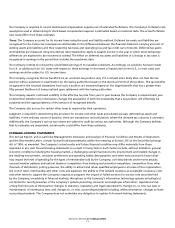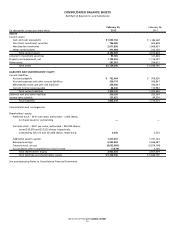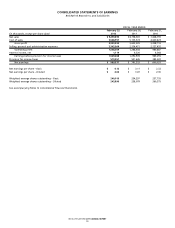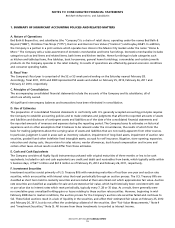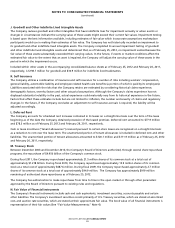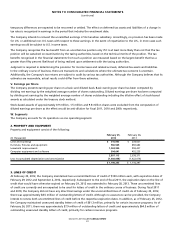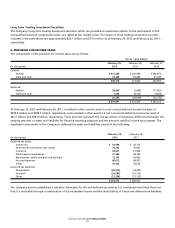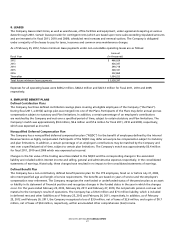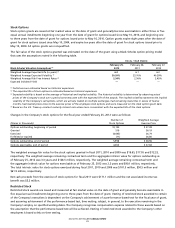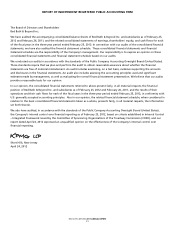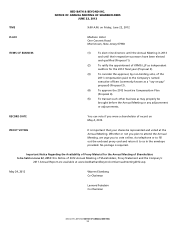Bed, Bath and Beyond 2011 Annual Report Download - page 25
Download and view the complete annual report
Please find page 25 of the 2011 Bed, Bath and Beyond annual report below. You can navigate through the pages in the report by either clicking on the pages listed below, or by using the keyword search tool below to find specific information within the annual report.
BED BATH & BEYOND 2011 ANNUAL REPORT
23
4. FAIR VALUE MEASUREMENTS
Fair value is defined as the price that would be received to sell an asset or paid to transfer a liability (i.e., “the exit price”) in an
orderly transaction between market participants at the measurement date. In determining fair value, the Company uses various
valuation approaches, including quoted market prices and discounted cash flows. The hierarchy for inputs used in measuring
fair value maximizes the use of observable inputs and minimizes the use of unobservable inputs by requiring that the most
observable inputs be used when available. Observable inputs are inputs that market participants would use in pricing the asset
or liability developed based on market data obtained from independent sources. Unobservable inputs are inputs that reflect a
company’s judgment concerning the assumptions that market participants would use in pricing the asset or liability developed
based on the best information available under the circumstances. The fair value hierarchy is broken down into three levels
based on the reliability of inputs as follows:
Since valuations are based on quoted prices that are readily and regularly available in an active market, valuation of these
products does not entail a significant degree of judgment.
are not active for identical or similar instruments, and model-derived valuations in which all significant inputs and significant
value drivers are observable in active markets.
As of February 25, 2012, the Company’s financial assets utilizing Level 1 inputs include long term investment securities traded
on active securities exchanges. The Company did not have any financial assets utilizing Level 2 inputs. Financial assets utilizing
Level 3 inputs included short term and long term investments in auction rate securities consisting of preferred shares of closed
end municipal bond funds (See “Investment Securities,” Note 5).
To the extent that valuation is based on models or inputs that are less observable or unobservable in the market, the
determination of fair value requires more judgment. Accordingly, the Company’s degree of judgment exercised in determining
fair value is greatest for instruments categorized in Level 3. In certain cases, the inputs used to measure fair value may fall into
different levels of the fair value hierarchy. In such cases, an asset or liability must be classified in its entirety based on the lowest
level of input that is significant to the measurement of fair value.
Valuation techniques used by the Company must be consistent with at least one of the three possible approaches: the market
approach, income approach and/or cost approach. The Company’s Level 1 valuations are based on the market approach and
consist primarily of quoted prices for identical items on active securities exchanges. The Company’s Level 3 valuations of auction
rate securities are based on the income approach, specifically, discounted cash flow analyses which utilize significant inputs
based on the Company’s estimates and assumptions. Inputs include current coupon rates and expected maturity dates.
The following table presents the valuation of the Company’s financial assets as of February 25, 2012 measured at fair value on a
recurring basis by input level:
Quoted Prices Significant
in Active Markets Unobservable
for Identical Assets Inputs
(in millions) (Level 1) (Level 3) Total
Auction rate securities $ — $ 6.5 $ 6.5
Auction rate securities — 73.7 73.7
Nonqualified deferred compensation plan assets 22.1 — 22.1
Total $ 22.1 $ 80.2 $ 102.3


